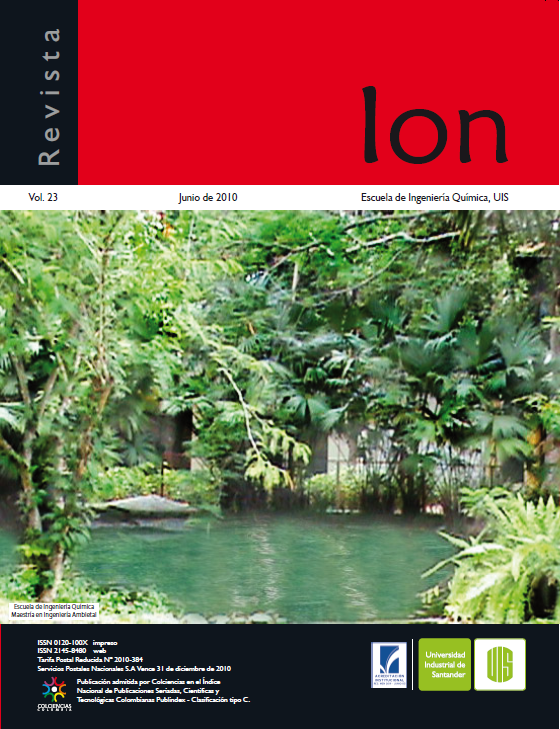INFLUENCIA DEL TIEMPO DE AGITACIÓN EN EL PROCESO DE MODIFICACIÓN CON QUITOSANO DE UNA ARCILLA COLOMBIANA TIPO MONTMORILLONITA
Publicado 2010-09-30
Como Citar
Resumo
RESUMEN
En este trabajo se presentan los resultados de la modificación de una arcilla tipo montmorillonita con un biopolímero policatiónico – quitosano- y la evaluación del efecto del tiempo de contacto entre arcilla y agente modificador sobre efectividad del tratamiento. Siguiendo una metodología propia, diseñada especialmente para tal fin, se obtuvieron arcillas modificadas con quitosano de alto peso molecular, empleando tiempos de agitación de 3, 6 y 12 horas. La efectividad del tratamiento de modificación fue evaluado a través de la medición del incremento en la distancia interlaminar de la arcilla, y la detección mediante FTIR de grupos funcionales característicos del quitosano en la estructura de la arcilla. En los espectros de DRX se observó que el espaciamiento interlaminar aumenta al incrementar el tiempo de contacto entre la arcilla y el modificante, conduciendo a un pronunciado desplazamiento y disminución en intensidad del pico característico correspondiente al plano (d001) de la montmorillonita. La existencia de grupos activos del quitosano en la estructura de la arcilla modificada se hizo evidente por la presencia en los espectros FTIR de bandas de absorción correspondientes a los grupos CH, NH3+, CH2 y NH2.
Palabras Claves: Organobentonita, Biopolímero, Nanocompuesto.
ABSTRACT
In this work, the results for the modification of a montmorillonite-type clay with a polycationic biopolymer – chitosan- are presented, along with the evaluation of the effect of contact time between clay and modifiying agent on the effectiveness of the modification treatment. Modified clays were prepared using high molecular weight chitosan, following a specially designed methodology and applying stirring times of 3, 6 and 12 hours. The effectiveness of the modification process was evaluated by measuring the increase in the interlayer spacing of the clay, and the detection of characteristic functional groups from the chitosan in the structure of the clay. From the XRD spectra it was observed that the interlayer spacing increases with the increase in contact time between clay and modifier, leading to a pronounced shift and intensity decrease of the characteristic peak, which corresponds to the (d001) plane of montmorillonite. The existence of active groups from chitosan in the modified clay structure was evident from the presence in the Infrared Spectra of absorption bands corresponding to CH, NH3+, CH2 y NH2.
Keywords: Organobentonite, Biopolymer, Nanocomposite.

